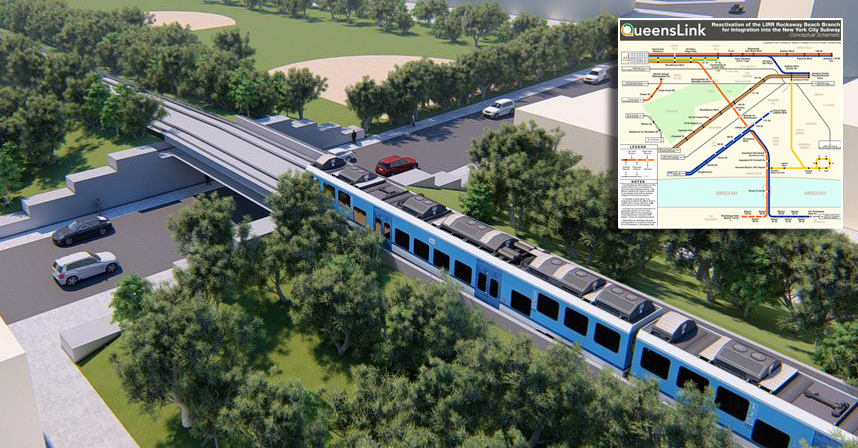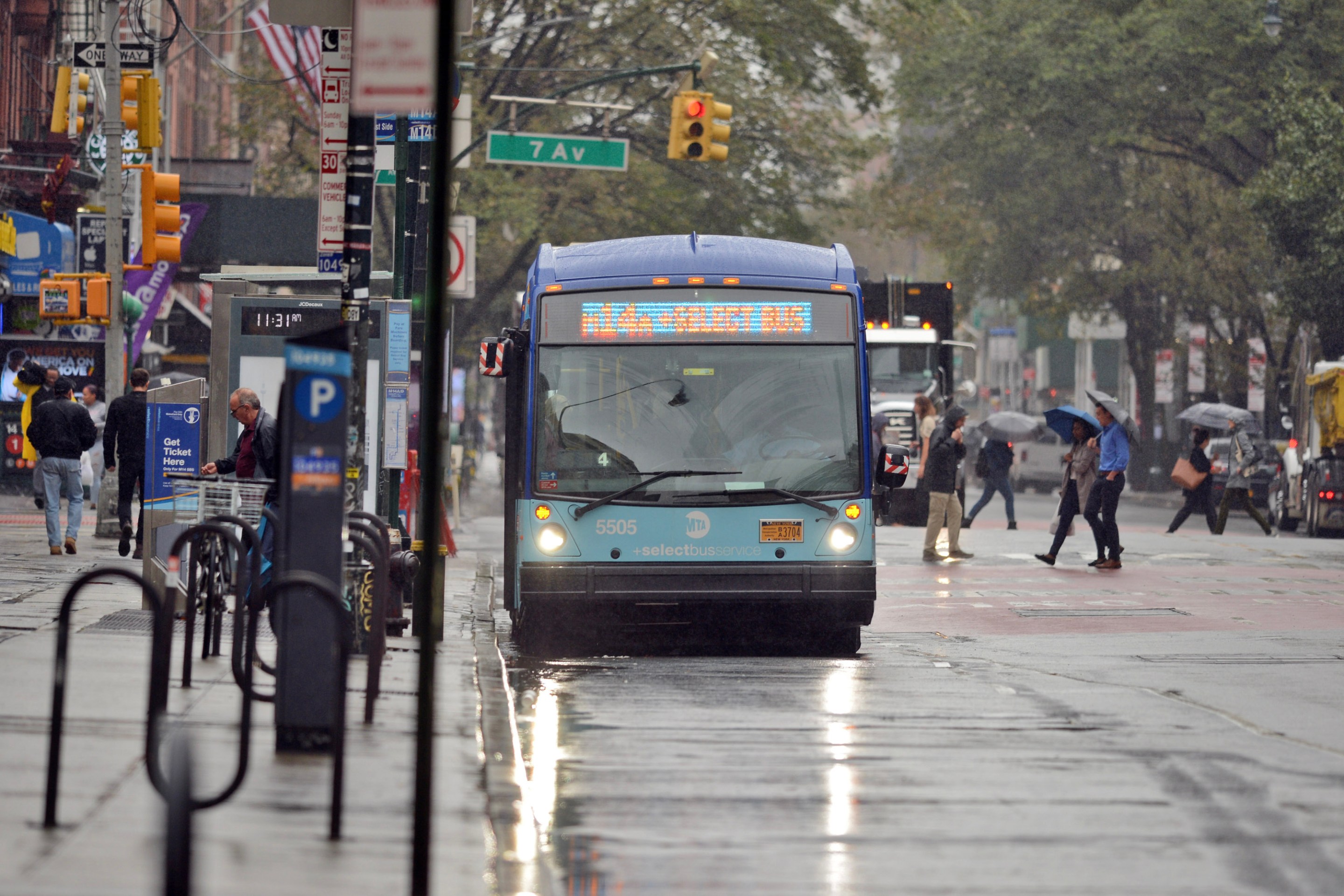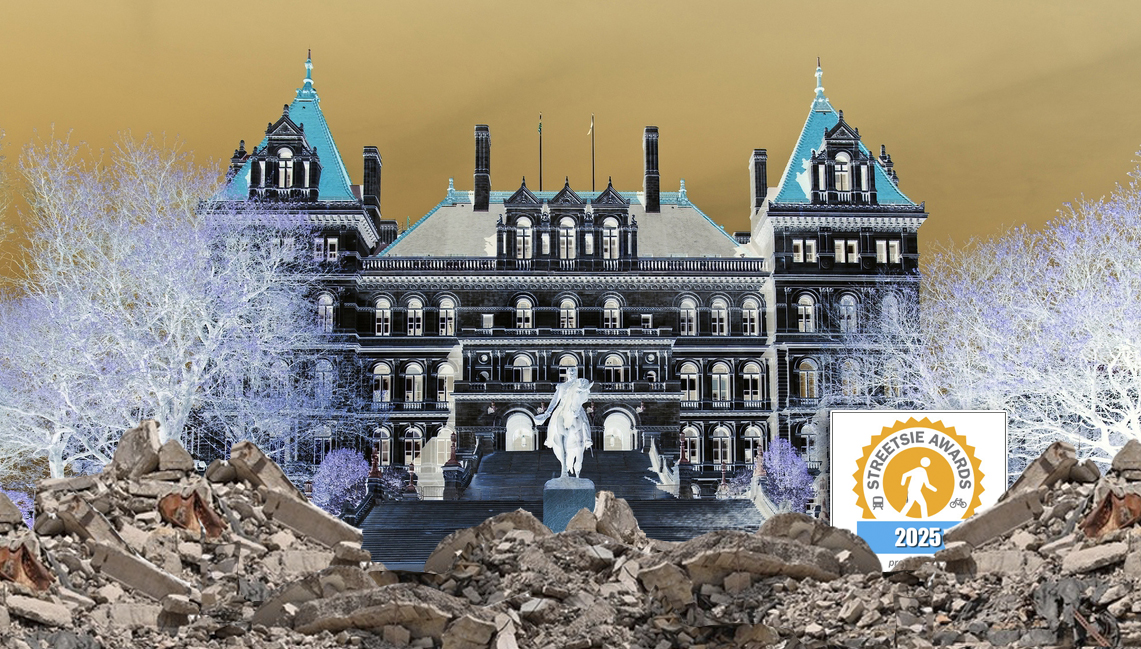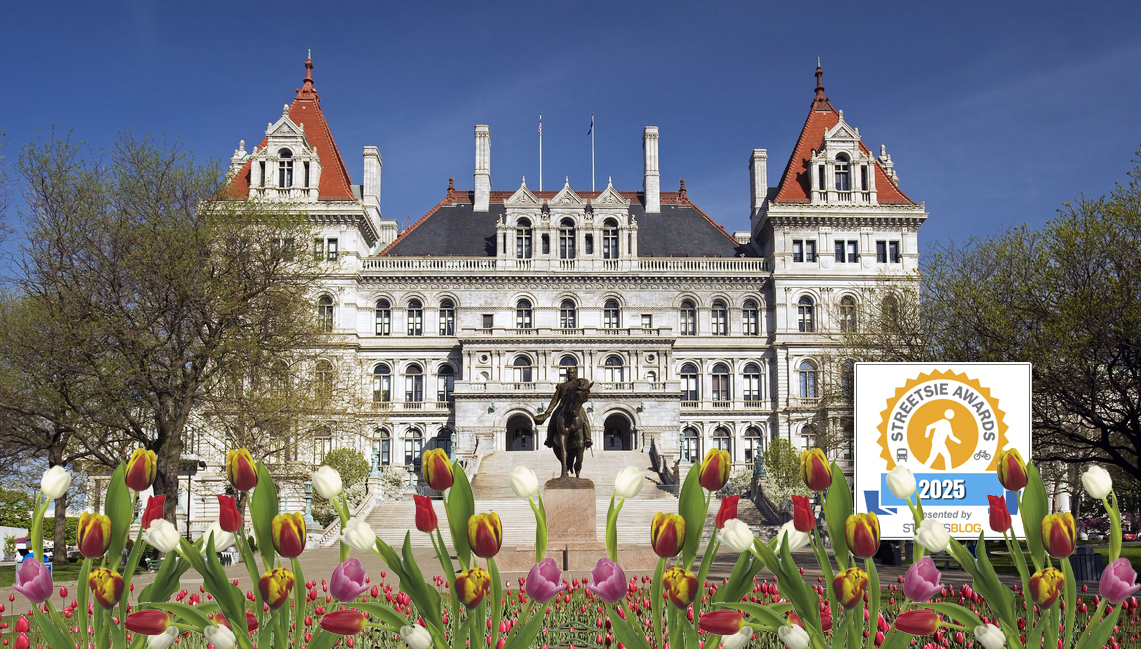Hundreds of people walked from City Hall to the United Nations yesterday to remember victims of traffic violence and call for action to prevent more loss of life on the streets. Addressing the crowd before the march, Mayor de Blasio said his administration's effort to eliminate traffic deaths "has just started" and pledged to "take it a lot farther."
At the insistence of the de Blasio administration and NYC street safety advocates, Albany enacted legislation in 2014 to lower the default speed limit to 25 mph and increase the number of speed enforcement cameras on NYC streets, and traffic deaths in the city are on pace for a historic low this year. Even with that improvement, however, it's all but certain that more than 200 people will be killed in New York traffic before 2015 is over. The persistent message yesterday from victims' families, advocates, and elected officials was that more must be done.
Noting that traffic violence had claimed more than a dozen lives in the last few weeks, Transportation Alternatives Executive Director Paul Steely White said the city must implement proven safety measures like pedestrian islands, protected bike lanes, and speed cameras more expeditiously. "We are not yet to the point where these common sense improvements are done routinely," he said.
The de Blasio administration has made incremental progress on street redesign but will have to dramatically accelerate the pace of change to achieve the rapid reduction in traffic deaths that Vision Zero calls for. DOT's high-impact street transformations, like the redesign of 1.3 miles of Queens Boulevard, don't cover enough ground each year in a city with 6,000 miles of streets. The department's political timidity and the lack of budgetary resources for quick, effective safety improvements have been a drag on progress.
Yesterday the mayor's message was on target. De Blasio said plainly that "redesigning streets saves lives" and speeding enforcement changes behavior. "There are a lot of things that have been accepted as the status quo that we should not accept," he said. "We have to jolt that reality, we have to change that to the core."
The question is whether the mayor will take the lead and jolt the status quo himself, like he did with the 25 mph law and speed cameras, or fade into the background again, letting obstructionist politicos and the retrograde elements within his administration dictate what happens to the city's streets.
The march was New York's way of observing the World Day of Remembrance for Road Traffic Victims, an event launched in the 1990s by Road Peace, a British organization of crash survivors and victims' families. There was no comparable group in New York until the recent emergence of Families for Safe Streets -- people who have lost loved ones to traffic violence or themselves suffered life-altering injuries.
Several electeds turned out to express solidarity with the families and their message -- that traffic deaths can be prevented and other New Yorkers can be spared their pain. In addition to the mayor, Congresswoman Carolyn Maloney, Public Advocate Tish James, Manhattan Borough President Gale Brewer, and City Council members Ydanis Rodriguez, Jimmy Van Bramer, and Helen Rosenthal addressed the crowd.
The marchers I spoke to said traffic violence is both an intensely personal issue for them and a pervasive problem that affects everyone.
Brian Thomas of the Bronx said he was "just glad to be alive" after an impatient driver blew past him while he was biking in Eastchester last month, sending him crashing to the pavement. He broke his left wrist, had some of his teeth knocked out, and suffered serious facial injuries that required surgery and continue to affect his speech.
"Had the driver not been in such a rush to get past me, this could have been avoided," he said. He came to the march not only because of his personal experience, but because street safety is "a lot bigger than me."
Norma Silva came down from Yonkers, where she's a member of the local bike club. She knows people who've been struck and injured, and she hopes to "do something up in Yonkers," which currently has no on-street bike lanes despite being the fourth-largest municipality in the state.
Jessica Hollingworth, struck by a driver turning left at Third Street and Fifth Avenue in Park Slope last summer, has a metal plate and six pins her leg. She spent three months on crutches, but the driver did not receive a ticket, she said, even though witnesses and NYPD's own crash report said he failed to yield to her in the crosswalk. "I want people to understand that pedestrians have the right of way," she said.





